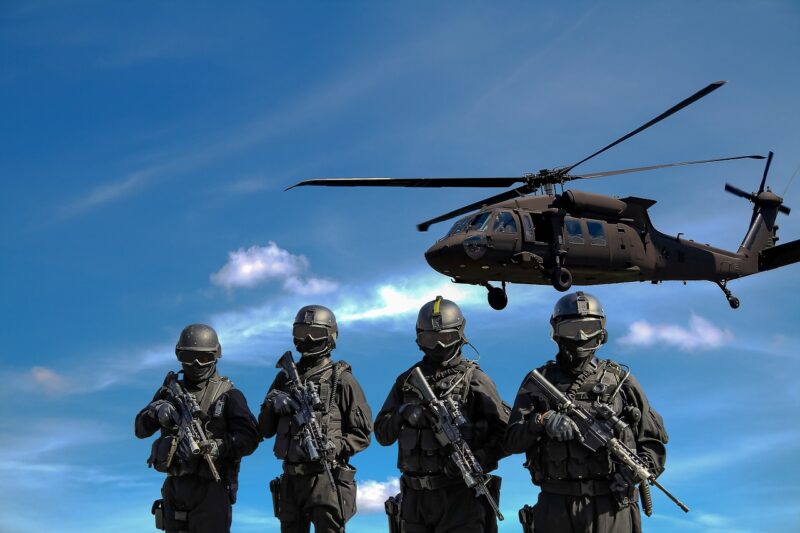The Weird World of Collecting Decommissioned Military Rations
November 14, 2024

In the myriad of collectible items available today, one niche stands out as particularly unique and often misunderstood: decommissioned military rations. From the infamous MREs (Meals Ready-to-Eat) to vintage C-Rations from the Vietnam War, these food packets tell tales not just of sustenance in the field, but of history, culture, and even innovation. This article will delve into the fascinating world of collecting military rations, exploring their history, the collecting community, and what you should know if you’re considering joining this unusual hobby.
1. A Brief History of Military Rations
Military rations have a storied history that dates back as far as ancient times, but modern rations gained prominence during the World Wars. Each conflict prompted advancements in food preservation and portability, with military rations evolving to meet the needs of soldiers in the field.
– World War I: Soldiers were issued preserved foods, but these were often bulky and difficult to carry. Canned goods became popular but were not always reliable in the field.
– World War II: The development of the K-Ration and the D-Ration standardized military meals. The K-Ration was meant for light infantry, while the D-Ration was designed primarily as high-energy chocolate to endure harsh conditions.
– Vietnam War: The C-Ration reigned supreme, featuring meat, canned fruits, and even desserts, providing soldiers with more variety compared to earlier rations.
– Modern Era: Currently, MREs are used by armed forces worldwide, incorporating a variety of international cuisines and dietary preferences, including vegetarian and halal options.
Collecting these rations can provide insights into wartime experiences and the evolution of military logistics.
2. The Appeal of Collecting Military Rations
The collection of military rations combines elements of history, nostalgia, and sometimes a bit of excitement about the unknown. Here are a few reasons why collectors are drawn to this unique hobby:
– Historical Significance: Each ration packet reflects the era in which it was produced, making it a tangible piece of history. Collectors enjoy the stories behind each item, exploring what soldiers experienced during different conflicts.
– Culinary Curiosity: Some collectors are fascinated by the variations in military food technology and recipes. The way food is preserved and presented can be quite innovative, often considered ahead of its time.
– Community and Camaraderie: The collecting community is often very supportive, with enthusiasts frequently attending trade shows, forums, and online groups dedicated to sharing insights, trades, and stories.
For many, it becomes a passion project, as they seek out rare finds at auctions, estate sales, or even military surplus stores.
3. What to Look for When Collecting Military Rations
If you’re interested in diving into the intriguing world of military ration collecting, here are key factors to consider:
– Condition: Like any collectible, the condition of a ration pack plays a significant role in its value. Unopened packs, especially those with stable seals, are more sought after than opened ones with missing or damaged components.
– Date and Era: Rations from significant historical moments may have higher collectible value, such as those from World War II or unique rations provided for specific military campaigns.
– Type of Ration: Different types of rations (K-Ration, C-Ration, MREs) can vary in desirability, with some collectors specializing in specific types.
– Documentation: Original packaging and any paperwork included, such as nutritional information or cooking instructions, can enhance a ration’s value.
Engaged collectors often keep detailed records of their purchases, demonstrating provenance and history.
4. The Role of Online Communities
The internet has become a treasure trove for collectors of decommissioned military rations. Online forums, social media groups, and dedicated websites allow enthusiasts to connect, share tips, and buy or trade rations. Here are some popular platforms:
– Facebook Groups: Numerous groups are dedicated to the sharing and discussion of military rations, where members post photos and histories of their collections.
– eBay and Specialty Auctions: Collectors often turn to platforms like eBay to buy or sell rations, sometimes fetching surprising prices for rare items.
– Military Surplus Stores: Many collectors frequent these stores, where older rations may sometimes be found at low prices.
Joining these online communities not only aids in collection efforts but also allows for the exchange of knowledge and experiences.
5. Ethical Considerations in Collecting
As with any hobby involving historical artifacts, there are ethical considerations to keep in mind:
– Respect for History: Understanding the origins of these rations and the sacrifices made by service members is essential. Collecting should never be about glorifying conflict but rather acknowledging the context of these items.
– Preservation and Conservation: Proper storage and care of military rations are imperative to preserve them for future generations. Many collectors invest in climate-controlled storage and archival materials to protect their finds.
By approaching this hobby with respect and consideration, collectors can ensure they honor the past while enjoying the thrill of their unique collections.
Conclusion: A Deliciously Odd Hobby
The world of collecting decommissioned military rations is undoubtedly offbeat but incredibly rewarding. From the historical significance of each packet to the camaraderie found within the community, there’s much to explore and appreciate. Whether you’re a curious beginner or a seasoned collector, engaging in this niche hobby opens up a window to history, humanity, and innovation.
So why not take the plunge? Dive deep into the strange, compelling, and even quirky world of military rations. You never know—you might find yourself fascinated by the stories that unfold with every packet in your collection.








